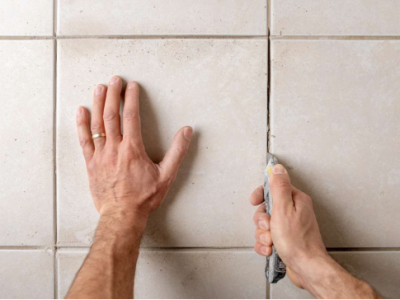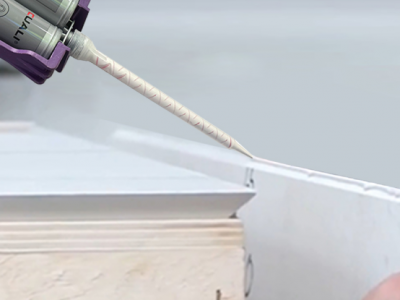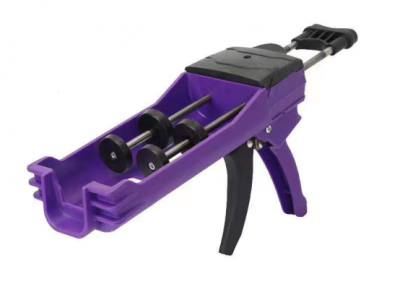In construction and manufacturing, adhesives play a pivotal role in creating durable, seamless bonds between materials. Among these, joint adhesive is a critical product used to fill, seal, or bond joints in structures, flooring, and panels. But what exactly is joint adhesive, how does it differ from solid surface adhesive, and where should each be used? As a leading brand in building chemical solutions, CUALI breaks down the essentials of joint adhesives, their types, and their unique applications compared to solid surface adhesives.
What is Joint Adhesive?
Joint adhesive is a specialized bonding material designed to fill, seal, or strengthen gaps (joints) between two surfaces. These adhesives prevent moisture ingress, structural movement, and material degradation while ensuring a durable bond. Joint adhesives are formulated for flexibility, strength, and resistance to environmental stressors like temperature changes, chemicals, or UV exposure.
Common Applications of Joint Adhesive
•Sealing expansion joints in concrete floors.
•Bonding tiles, panels, or flooring materials.
•Filling gaps in wall assemblies or roofing systems.
•Securing joints in automotive or aerospace components.
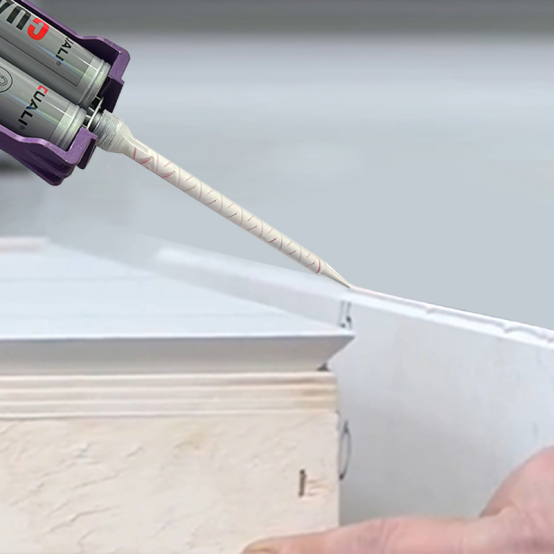
Types of Joint Adhesive
1. Epoxy Joint Adhesive
Epoxy-based joint adhesives combine resin and hardener to create a rigid, chemical-resistant bond. Ideal for heavy-duty applications like industrial flooring or machinery bases.
•Features: High strength, chemical resistance, minimal shrinkage.
•Uses: Concrete joints, metal-to-metal bonding, structural repairs.
2. Polyurethane Joint Adhesive
Polyurethane adhesives are flexible and weatherproof, making them suitable for outdoor or dynamic environments.
•Features: Elasticity, UV resistance, waterproofing.
•Uses: Expansion joints, roofing, automotive panel bonding.
3. Silicone Joint Adhesive
Silicone adhesives excel in high-temperature and waterproofing applications.
•Features: Heat resistance, flexibility, water repellency.
•Uses: Bathroom joints, glass bonding, HVAC systems.
4. MS Polymer Joint Adhesive
MS (Modified Silane) polymer adhesives offer a balance of flexibility and strength without solvents.
•Features: Low VOC, adhesion to multiple substrates, durability.
•Uses: Flooring joints, window installations, exterior panel bonding.
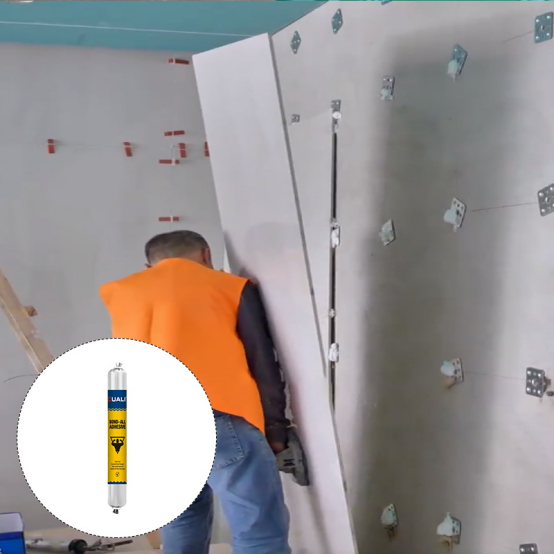
5. Acrylic Joint Adhesive
Fast-curing and cost-effective, acrylic adhesives are used for lightweight bonding.
•Features: Quick setting, paintability, moderate strength.
•Uses: Drywall joints, decorative trim, DIY projects.
Joint Adhesive vs. Solid Surface Adhesive
While both adhesives are used for bonding, their formulations and applications differ significantly:
Aspect | Joint Adhesive | Solid Surface Adhesive |
Primary Use | Sealing/filling gaps in joints | Bonding solid surfaces (e.g., Corian®, quartz) |
Flexibility | Ranges from rigid (epoxy) to flexible (PU) | Moderate flexibility to match solid surfaces |
Aesthetic Finish | Often hidden or painted over | Requires seamless, invisible bonds |
Key Features | Weatherproofing, load-bearing capacity | Color-matching, sanding/polishing compatibility |
Common Applications | Concrete floors, roofing, automotive | Countertops, sinks, architectural panels |
When to Use Joint Adhesive vs. Solid Surface Adhesive
1. Choose Joint Adhesive For:
•Structural Joints: Expansion joints in concrete, bridges, or pavements.
•High-Stress Environments: Industrial flooring, machinery bases.
•Outdoor Applications: Roofing, window perimeters, exterior panels.
2. Choose Solid Surface Adhesive For:
•Seamless Surfaces: Countertops, vanity tops, or wall panels.
•Aesthetic Projects: Visible joints in high-end interiors.
•Hygienic Settings: Hospitals, labs, or commercial kitchens.
How to Apply Joint Adhesive
1.Surface Preparation: Clean and dry the joint area. Remove debris, oil, or old adhesive.
2.Priming (if required): Apply primer to enhance adhesion.
3.Application: Use a caulking gun or trowel to fill the joint evenly.
4.Curing: Allow time to cure (varies by type—epoxy: 24–72 hours; silicone: 2–24 hours).
5.Finishing: Sand or paint over the adhesive if needed.
CUALI’s Joint Adhesive Solutions
CUALI offers a range of high-performance joint adhesives tailored to diverse needs:
•Epoxy Joint Adhesive: For heavy-duty, chemical-resistant bonds.
•MS Polymer Adhesive: Flexible, eco-friendly option for flooring and exteriors.
Pair with CUALI’s solid surface adhesive for projects requiring invisible seams in countertops or decorative panels.
FAQs
1. Can joint adhesive replace solid surface adhesive?
No. Joint adhesive lacks the color-matching and finishing properties needed for solid surface projects.
2. Is joint adhesive waterproof?
Most polyurethane and silicone joint adhesives are waterproof. Check the product specifications.
3. How long does joint adhesive last?
High-quality joint adhesives like CUALI’s can last 10–20 years, depending on environmental stress.
Conclusion
Joint adhesive is a versatile, essential material for sealing and bonding gaps in construction, manufacturing, and DIY projects. Understanding the types—epoxy, polyurethane, silicone, and MS polymer—helps select the right product for your needs. While joint adhesives focus on structural integrity and weatherproofing, solid surface adhesives prioritize aesthetics and seamless finishes.
For durable, reliable results, trust CUALI’s joint adhesives and complementary products like solid surface adhesive to meet the demands of any project. Explore our range today and experience the CUALI difference in quality and performance!



